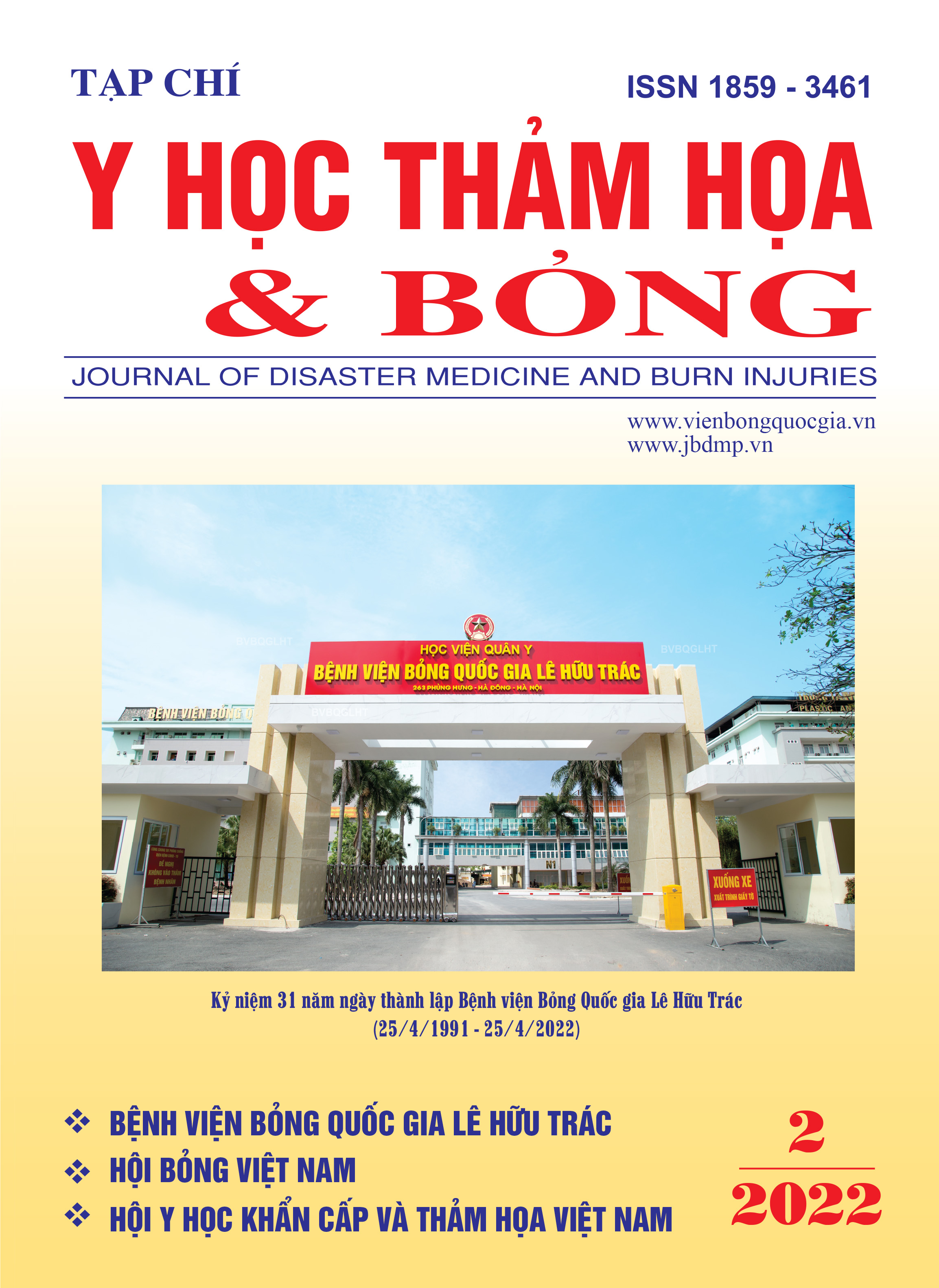Subacuteclinical toxicity of nano Berberine gel in rats
Main Article Content
Abstract
Berberine is isolated from Coscinium fenestratum and several Ranunculaceae plants and it has been demonstrated to have therapeutic properties on the burn wound. The purpose of the study determined the subacute clinical toxicity of nano berberine gel produced by the National Burn Hospital orally in rats.
Methods: The research was carried out according to the guidelines of the Ministry of Health, OECD. Conducted on 30 rats, divided into 3 groups, the test group administrated Dose 1 3.5g/1kg/24h, the group tested Dose 2 drank 10.5g/1kg/24h, the control group administrated distilled water Dose 10.2ml/1kg/24h. Take the doses continuously for 28 days.
Results: No dead rats, no abnormal movement and digestive disorders; no signs of convulsions, tremors, increased sweating, cyanosis.
Conclusion: Berberine nano gel was clinically safe when given to rats orally for 28 days between 3.5g/1kg/24h and 10.5g/1kg/24h.
Article Details
Keywords
Nano Berberine, rats, subacute toxicity
References
2. OECD guideline for testing chemicals, OECD/OCDE 423; Repeated Dose 28-day Oral Toxicity Study in Rodents, Adopted 3rd October 2008.
3. Seyede Zohre Kamrani Rad, Maryam Rameshrad and Hossein Hosseinzadeh, Toxicology effects of Berberis vulgaris (barberry) and its active constituent, berberine: a review, Iran J Basic Med Sci., 2017. 20(5): p. 516-529.
4. Tài liệu tổng quan mới về Berberin
5. Vujanovic S, Vujanovic J (2013). Bioresources in the pharmacotherapy and healing of burns: A mini-review; Burns; Volume 39, Issue 6, Pages 1031-1038
6. Hirsch T, Ashkar W, Schumacher O, et al (2008). Moist exposed burn ointment (MEBO) in partial-thickness burns: a randomized, comparative open mono-center study on the efficacy of dermaheal (MEBO) ointment on thermal 2nd-degree burns compared to conventional therapy. Eur J Med Res;13:505-10
7. Hirsch T, Ashkar W, Schumacher O, et al (2008). Moist exposed burn ointment (MEBO) in partial-thickness burns: a randomized, comparative open mono-center study on the efficacy of dermaheal (MEBO) ointment on thermal 2nd-degree burns compared to conventional therapy. Eur J Med Res;13:505-10
8. Jewo PI, Fadeyibi IO, Babalola OS, et al (2009). A comparative study of the wound healing properties of moist exposed burn ointment (MEBO) and silver sulphadiazine. Ann Burns Fire Disasters;22:79-82
9. Spencer T, Gorinshteyn B, Ganey T (2016). Efficacy and Safety of Berberex Wound Cleanser on Post-Operative Surgical Incisions. Clin Surg.; 1: 1196.
10. Mabrouk A, Boughdadi NS, Helal HA, et al (2012). Moist occlusive dressing (Aquacel Ag) versus moist open dressing (MEBO) in the management of partial-thickness facial burns: a comparative study in Ain Shams University. Burns; 38(3):396-403.
11. Atiyeh BS, Ghanimeh G, Kaddoura IL, et al (2001). Split-thickness skin graft donor site dressing: preliminary results of a controlled, clinical comparative study of MEBO and Sofra-Tulle. Ann Plast Surg.; 46(1):87-8.
12. Bộ Y Tế (2015). Hướng dẫn thử nghiệm tiền lâm sàng và lâm sàng thuốc đông y, thuốc từ dược liệu, QĐ 141/BYT-QĐ
13. WHO (1993). Research guidelines for evaluating the safety and efficacy of herbal medicines, Manila, Philippines, pp 35-41
14. Eaton DL, Steven G. Gilbert; Principles of Toxicology. In: D. Kilassen C, editor. Casarett &Doull’s Toxicology the basic science of poisons. 8th ed. New York: MC Grow Hi education; 2013: p. 34-3
15. Nguyen Ngoc Tuan, Le Quoc Chieu, Le Thi Hong Hanh. Acute toxicity of nano Berberine gel in white mice, Tạp chí Y học thảm hoạ và Bỏng, số 6/2021; p 10-19
16. Shannon Reagan-Shaw, Dose translation from animal to human studies revisited, The FASEB Journal, 2008; vol. 22 no. 3 659-661
17. Ning N, Wang YZ, Zou ZY, Zhang DZ, Wang DZ, Li XG. Pharmacological and safety evaluation of fibrous root of rhizoma coptidis. Environ Toxicol Pharmacol. 2015;39:53-69
18. Yi J, Ye X, Wang D, He K, Yang Y, Liu X, et al. Safety evaluation of main alkaloids from rhizoma coptidis. J Ethnopharmacol. 2013;145:303-310


